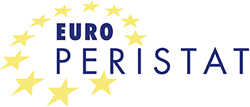NETWORK UPDATE: Welcoming CROATIA
Data collection:
The official main source of population data in Croatia is the Central Bureau of Statistics (CBS). CBS birth data are limited to sex, vital status: live birth/ stillbirth and basic socio-demographic characteristics of mothers (permanent residence, marital status, parity, and professional birth attendance).
In 2001 and in order to facilitate perinatal health research and monitoring, new medical birth and perinatal death notification forms were introduced by the Croatian Institute of Public Health (CIPH), in cooperation with the Croatian Society of Perinatal Medicine (CSPM). These new forms collect a broader set of perinatal health data and allow for analyses of individual-level data on births and deaths, and reporting of aggregated data by birth weight (BW) and gestational age (GA) subgroups based on the WHO recommendations.
Registration criteria used for livebirths/stillbirths:
Civil registration system:
CBS registration criteria for livebirths (LB) are based on the WHO livebirth registration criteria.
The Central Bureau of Statistics used to calculate fetal mortality (FM) as the number of stillbirths after 28 completed weeks of gestation per 1,000 total births, irrespective of BW. Since 2001 however, fetal death data are collected for births ≥22 GA weeks, irrespective of BW. Early neonatal mortality (ENM), is calculated as the number of newborns who died in the first 168 hours (7 days) of life per 1,000 LB, irrespective of BW or GA.
Hospital discharge data:
CIPH collects stillbirths and ENM data for all births ≥22 GA weeks or ≥500 g.
For national analyses and evaluation of perinatal health care, routine mortality data are reported for all perinatal deaths ≥500 g as well as ≥1000 g, based on the WHO-HFA criteria for international perinatal mortality comparisons. Additional analyses have also been conducted on national level, according to GA subgroups (22-27 GA weeks; 28-31 GA weeks; 32-36 GA weeks and ≥37 GA weeks) for stillbirths, early neonatal and total perinatal deaths.
Perinatal outcomes in 2014:
Coverage for births attended by a health care professional is 99% and takes place in health institutions. In 2014 almost half of all deliveries were first deliveries, 35% were second and 15% third or higher birth order.
Concerning maternal age, deliveries were most common between 25-29 years old (91.8 deliveries per 1,000 females of the same age), followed by deliveries of mothers 30-34 (89.7‰), and 20-24 (47.5‰). On average, mothers giving birth were 30 while the average age at first birth among women was 27. About 3% of births were multiples.
According to CIPH data, 20,283 males and 19,505 females were born; the sex ratio was 1.04:1 male to female newborns. In 2014, 5.24% births were less than 2500g of which, 3.18% were 2000-2499 g, 1.08% were 1500-1999 g, 0.47% newborns were 1000-1499 g and 0.51% were extremely low birth weight – less than 1000 g.
Perinatal mortality (PNM) for total births was 4.2‰ calculated by WHO-HFA methodology criteria of BW ≥1000 g which was lower than the European Union (EU) average of less than 5‰ for the period of 2007 onwards. However, PNM for total births BW ≥500 g was 6.8‰ and 7.1‰ for total births ≥22 GA in 2014.
FM was 5.7‰-4.0‰ for ≥22 weeks in the period 2001-2014, mildly decreasing from 2001 to 2014. ENM was 4.4‰-3.1‰ for ≥22 weeks in the period 2001-2014, decreasing in 2012 (1.9‰) and increasing in the years 2013 (2.3‰) and 2014 (3.1‰).
ENM was the highest in very low birth weight groups (below 1500 g), where attempts are made to reduce the number of low birth weight babies using certain organisational and technological improvements.
Most perinatal deaths are due to maternal complication and premature delivery (due to the consequences of immaturity). Hence, prioritised measures for safe motherhood in Croatia are linked with the prevention, control and early detection of complications in pregnancy.
The maternal mortality ratio (MMR) for Croatia varied substantially over time with an average of 8.1/100,000 LB during the period 2001-2014 – slightly higher than the EU average in recent years. Maternal deaths from direct obstetrical causes are rare but total MMR (including direct and indirect obstetrics causes) was 2.5/100,000 LB in 2014.
Perinatal health care organisation:
Perinatal health care measures are defined by health care acts or ordinances (Health Care Measure Programme; Health Insurance Act) setting the standard for perinatal care. The recommendations of CSPM, officially adopted and completely financed through compulsory insurance are: 10 antenatal visits (AV) per healthy pregnant woman and 3 ultrasound examination (US).The low proportion of pregnant women without adequate antenatal care (1.9% with 0-2 AV and 1.3% with 0-1 US) represents the indicators of good usage and availability of prenatal care.
In order to improve the structure of the Croatian perinatal health care system, all maternities and neonatal units are organized in a network, regionalized according to professional guidelines. However, the network is not officially confirmed by Ministry of Health of the Republic of Croatia. Pregnant women and post-partum sick newborns, are referred to facilities by level of care based on maternal and/or infant health condition. Referrals are essentially made towards maternities with NICUs, level III units, or based on the closest available perinatal unit. The most complicated pregnancies and newborns can be referred to the National Center of Perinatal Medicine or to the National Center of Neonatal Intensive Medicine (level IV). The transfer of sick newborns is organized as a “one-way transport”.
Croatia’s basic health goals directed at improving maternal and child health are:
(i) Establishing a regional organisation for perinatal care with which the mother and child care will be divided into three levels (from delivery of care to a healthy pregnant, respectively childbearing woman and child, to the care of risk pregnancies according to the level of hazard)
(ii) Developing special services, especially the neonatalogic service
(iii) Adequate monitoring and evaluation of care at every level
(iv) Intersectoral collaboration in defining the regulations promoting rights to the protection of maternal and child health
(v) Collaborating with NGOs on further advancement and humanisation of care.
